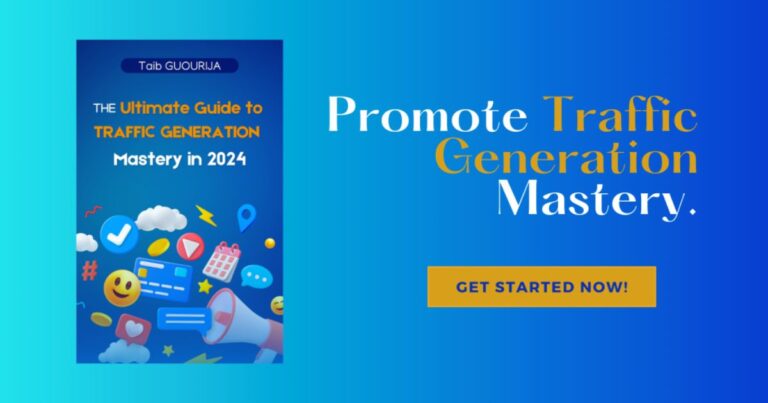Introduction- Human-Artificial Intelligence Collaboration: The Future of Work, Creativity, and Innovation
The rise of artificial intelligence (AI) has sparked both excitement and fear. Will machines replace humans? Or can we forge a partnership that amplifies our capabilities? The answer lies in human-AI collaboration—a transformative relationship where humans and AI systems work together to solve complex problems, drive innovation, and achieve outcomes neither could accomplish alone.
From healthcare to creative industries, this synergy is reshaping how we work, learn, and create. In this comprehensive guide, we’ll explore:
- What human-AI collaboration means and why it matters.
- Real-world applications across industries.
- Benefits, challenges, and ethical considerations.
- How to build effective human-AI teams.
- The future of this partnership.
By the end, you’ll understand why embracing collaboration—not competition—with AI is key to thriving in the digital age.
What Is Human-AI Collaboration?
Human-AI collaboration is a cooperative workflow where:
- Humans provide creativity, empathy, ethical judgment, and contextual understanding.
- AI offers data processing, pattern recognition, scalability, and predictive analytics.
Examples:
- A radiologist uses AI to flag potential tumors in X-rays, then applies medical expertise to diagnose.
- A marketer leverages AI-generated content ideas but finalizes campaigns based on brand voice and emotional resonance.
Unlike full automation, collaboration keeps humans “in the loop” to guide, refine, and validate AI outputs.
Click here : Human-AI
Why Human-AI Collaboration Matters
1. Enhances Productivity
AI handles repetitive tasks (data entry, report generation), freeing humans to focus on high-value work.
- Stat: McKinsey estimates AI could automate 45% of work activities, boosting global productivity by $13 trillion by 2030.
2. Drives Innovation
AI accelerates ideation by analyzing vast datasets for trends, while humans contextualize insights.
- Case Study: Moderna used AI to design mRNA sequences for its COVID-19 vaccine in 2 days—a process that previously took months.
3. Reduces Errors
Humans catch AI biases or inaccuracies, while AI minimizes human fatigue-related mistakes.
- Example: Pilots use AI systems to monitor flight paths but retain control during emergencies.
4. Democratizes Expertise
AI tools like ChatGPT or Canva’s Magic Design empower non-experts to draft code, design graphics, or analyze data.
Industries Transformed by Human-AI Collaboration
1. Healthcare
- Diagnostics: AI analyzes medical scans; doctors interpret results and plan treatments.
- Drug Discovery: AI predicts molecular interactions; scientists validate and refine candidates.
- Patient Care: Chatbots triage symptoms, but nurses provide compassionate follow-ups.
2. Manufacturing
- Predictive Maintenance: AI detects machinery anomalies; technicians perform repairs.
- Quality Control: Computer vision inspects products; workers address root causes of defects.
3. Creative Industries
- Content Creation: AI generates draft copy or music; writers and composers add emotional depth.
- Film Production: AI edits footage or generates CGI; directors ensure artistic vision alignment.
4. Finance
- Fraud Detection: AI flags suspicious transactions; analysts investigate and block fraud.
- Investment Strategy: AI models market trends; portfolio managers make risk-adjusted decisions.
5. Education
- Personalized Learning: AI tailors lesson plans; teachers mentor students based on emotional needs.
- Grading: AI scores objective tests; educators assess essays and creative projects.
Challenges and Ethical Considerations
1. Trust and Transparency
- Issue: “Black box” AI systems make decisions humans can’t explain.
- Solution: Develop explainable AI (XAI) and audit algorithms for bias.
2. Job Displacement Fears
- Issue: Workers worry AI will replace roles.
- Solution: Reskill employees for AI-augmented jobs (e.g., AI trainers, ethics auditors).
3. Ethical Risks
- Bias: AI trained on flawed data may perpetuate discrimination.
- Accountability: Who’s responsible if a human-AI team makes a harmful decision?
Guidelines for Ethical Collaboration:
- Prioritize transparency in AI decision-making.
- Ensure diverse teams design and test AI systems.
- Establish clear human oversight protocols.
Building Effective Human-AI Teams: A Step-by-Step Framework
1. Define Roles Clearly
- Humans: Creative strategy, ethical oversight, empathy-driven tasks.
- AI: Data crunching, repetitive workflows, predictive analytics.
2. Choose the Right Tools
- Task-Specific AI: Use specialized tools (e.g., Grammarly for editing, IBM Watson for healthcare).
- Collaboration Platforms: Slack, Microsoft Teams, or Notion integrate AI assistants for seamless workflows.
3. Train Teams for Synergy
- Upskill Employees: Teach AI literacy, data interpretation, and prompt engineering.
- Train AI Models: Use human feedback to refine outputs (e.g., ChatGPT’s reinforcement learning).
4. Measure Success
Track metrics like:
- Task Completion Time: Did AI speed up processes?
- Error Rate: Are human-AI teams more accurate?
- Employee Satisfaction: Do workers feel empowered, not replaced?
The Future of Human-AI Collaboration
Emerging trends will deepen this partnership:
1. Emotional AI
Systems like Affectiva analyze human emotions via voice or facial cues, enabling AI to respond empathetically in customer service or mental health support.
2. Brain-Computer Interfaces (BCIs)
Companies like Neuralink aim to merge human cognition with AI processing power for real-time collaboration.
3. AI as Co-Creators
Tools like DALL-E and MidJourney will evolve into creative partners, helping artists prototype ideas faster.
4. Decentralized AI
Blockchain-based AI networks will let users collaborate securely without centralized control.
FAQs About Human-AI Collaboration
Q: Will AI replace human jobs?
A: AI will automate tasks, not entire roles. New jobs will emerge (e.g., AI ethicists, hybrid managers).
Q: How can small businesses adopt human-AI collaboration?
A: Start with affordable tools like ChatGPT for content, QuickBooks for finance, or Zoho CRM for sales.
Q: Is human-AI collaboration safe?
A: With robust security protocols and ethical guidelines, risks are manageable.
Q: What skills will be valuable in an AI-collaborative world?
A: Critical thinking, adaptability, emotional intelligence, and interdisciplinary knowledge.
Conclusion: Embrace the Partnership
Human-AI collaboration isn’t about machines taking over—it’s about unlocking our collective potential. By combining human ingenuity with AI’s computational power, we can solve global challenges, from climate change to healthcare disparities, with unprecedented speed and scale.
The key lies in designing systems that prioritize complementarity, transparency, and ethical responsibility. As AI evolves, so must our ability to guide it with wisdom, creativity, and empathy.
World’s First AI “ Operator ” That Creates “AI Humans ” That Talk And Interact With Any Audience, In Any Language… Watch Now






